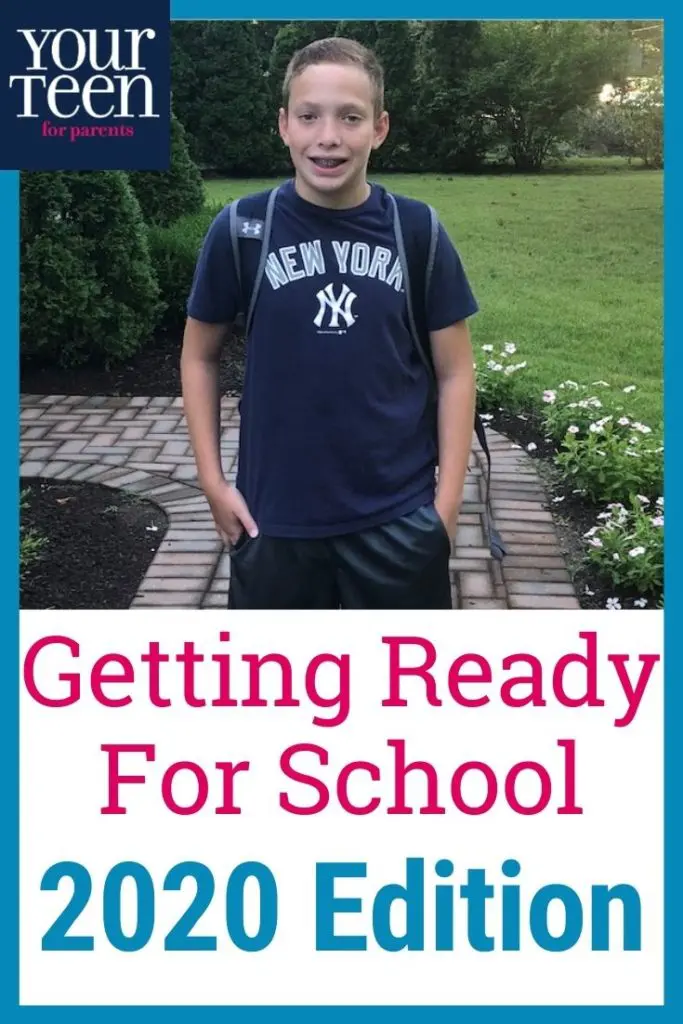For most school districts, the 2020-2021 school year will likely look different from years past. While some students are returning in person, many will do so in a hybrid model where they attend school a couple of days a week and learn remotely the other days. Or, like my kids, students may begin with virtual learning and return to school once the district officials determine it is safe to do so.

My kids aren’t thrilled about learning remotely. As they’ve told me several times, the virtual setup means they have to do all the work without any of the fun. The coursework, assignments, and tests will remain part of their daily experience, but they’ll lose out on the aspect of school they value most: socialization. They won’t get to chat with friends at lunch or while walking between classes, and they won’t get to cheer on the football team or dress up for the homecoming dance.
I imagine my kids aren’t alone with their frustrations, so I asked the experts for their advice about ways parents can help their teens accept—and maybe even feel excited about—the new school year.
How to Get Ready for School (2020 Edition)
1. Open the lines of communication.
Doug Newton, MD, MPH, Chief Medical Officer of SonderMind and father of two, says setting the stage for open dialogue is the most important step to take when helping teens navigate uncharted territory—but it’s important that parents not project what their own emotions might be.
“We all have memories of high school—going to football games and engaging in activities—and we lament that our teens are missing out on those events.” Newton reminds parents that kids are more resilient and adaptable than adults. “What we think of as a problem might not be a problem for teens,” he says. “It’s important to remember that every teen’s experience will be different.”
2. Face the downsides.
Dr. Carla Maria Manly, a clinical psychologist and author of Joy from Fear: Create the Life of Your Dreams by Making Fear Your Friend, urges parents to discuss the downsides of the current situation with their teens.
Those conversations can be more productive when parents listen without judgement. “When parents listen attentively and allow teens to vent, teens often experience a mood boost simply from having the opportunity to unload,” she says
3. Model ways to manage emotions.
We all have emotions about the challenges brought on by the pandemic. Some of us feel overwhelmed by having to wear so many hats and figure out how to keep our kids engaged in productive activities while also working and managing our households. We struggle with our own disappointment because of unexpected changes.
Added to that is the uncertainty around trying to stay safe during a worldwide health crisis. “Nobody has the answers right now,” says Newton. “Teens are confused, adults are confused, experts are confused.”
This time of stress and confusion provides opportunities for parents to model managing their own emotions appropriately and practicing effective coping strategies.
4. Foster compassion.
Newton has a saying he repeats often with kids and parents: “Compassion is more contagious than COVID.”
Talking to kids about the different emotions we all experience provides opportunities for teens to practice compassion. When teens understand that other people are also challenged by current circumstances, they can better accept their own emotions. “Teens can learn to reap rewards from practicing compassion with themselves and others,” Newton says.
5. Provide opportunities for connection.
Interaction with peers is an important part of a teen’s development and can impact mental and emotional health. “Try to recreate a sense of community and an ecosystem for teens,” Newton advises. “It might feel artificial, but it can help teens feel connected.”
| [adrotate banner=”167″] |
Newton encourages parents and teens to be creative about finding ways to interact. Perhaps seek volunteer opportunities, such as working in a community garden, or participating in socially distanced outdoor activities.
6. Remember the 80/20 rule.
According to the Pareto Principle, 80 percent of the results come from 20 percent of the action. Dr. Newton explains that people need to spend about 20 percent of their time engaging in activities about which they are passionate to make up for the 80 percent of time they spend on less exciting endeavors.
Teens may be losing out on that 20 percent of fun in the school day when they see friends in the hallways or participate in pep rallies and extracurricular activities. Parents can help teens find ways to pursue their passions to compensate for the time spent on less exciting school tasks. “That 20-30 percent of their time doing things that motivate them can be the glue that holds everything together,” Newton says.
7. Maintain back-to-school rituals.
Although teens may not be going to school in person, Dr. Manly recommends engaging in time-honored rituals, like back-to-school shopping, back-to-school photos, and a back-to-school picnic.
“A few new items of clothing, a fresh box of colored pencils, and a celebratory outing will help create feelings of excitement and positivity,” Dr. Manly says.
This school year is certain to be different for teens and parents—and not necessarily in positive ways. So if you or your teen are struggling, professional help may be closer than it seems. “Teens can struggle in the best of times, so they may need more support right now,” says Newton. “With virtual therapy sessions available, it’s easier than ever to get that help.”

Hopefully, despite the challenges all of us are facing this school year, we can help our teens find a little joy in their new normal.





